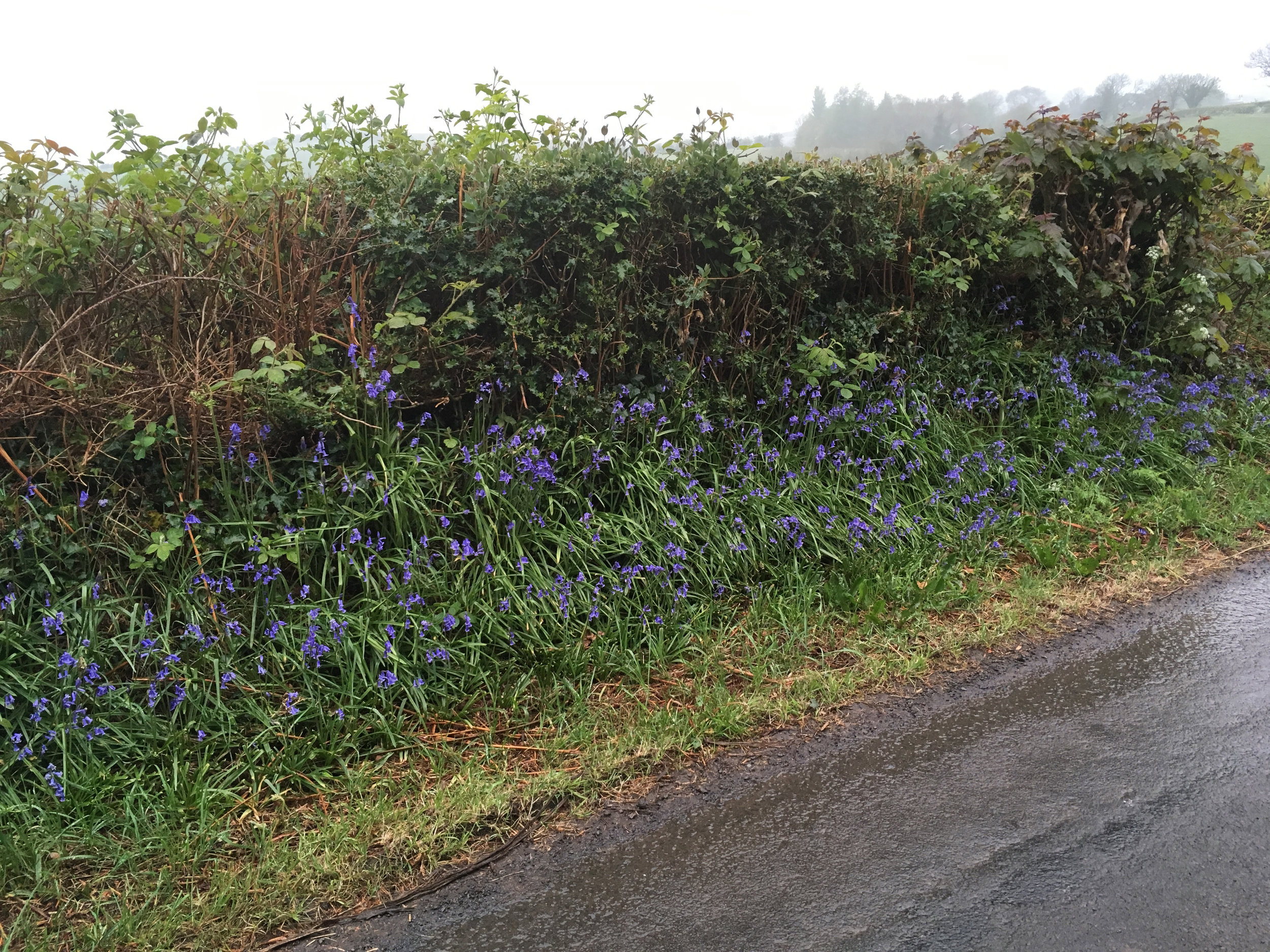LANDSCAPE
CULTURE
WILD ROADS
WILD ROADS
alistair kirkpatrick
The creation of roads, mass destruction of landscape as it is the conduit for all the forces that bring that destruction in yet they have become the last refuge for wildness and diversity in modified landscapes. In the lanes of Northern Ireland, you get ephemeral wetlands in the roadside swales, you get multifaceted geomorphology which allows for a diversity of niches, you get self-determining vegetation without the pressures of grazing, spraying or slashing and you get protection for fauna. I saw 4 burrows, I assumed foxes, although they could have been badger, I saw native bluebells, native terrestrial orchids and native roses. There was only one field in the entire walk which had bluebells and they were extremely minimal.
In Australia the situation is similar recently travelling up the northern highway near Heathcote it occurred to me that the only low land eucalypt forest to survive for many kilometres around was in the road reserves and due to the age of the road it was the expression of the original seedbank which give a fascinating snapshot into the floristic composition of the original forests. Since the advent of the car so much of the landscape we experience is through the lens of the windscreen, making roadside remnant vegetation a truly iconic landscape form. The importance of these landscape was recognised by Edna Walling in her book “The Australian Roadside” published in 1952. Walling was exploring both the ecological significance and the cultural identity these landscapes offered.
We are lucky in Australia to still have large areas of remnant ecologies, it was sobering to visit a landscape such as Northern Ireland where the road verge is truly the last vestige of wilderness.
Indoor Gardens
AKAS landscape architecture on indoor plants- Indoor plants both filter and clean the air removing toxins and pollutants which is important at home and work, especially in new buildings. But above all they are a stunning addition to any indoor space, and give you contact with the outside when your stuck inside! Here are some key tips, as well as some of the plants and techniques we used to style the space.
THE INDOOR GARDEN
anthony sharples
We recently styled the office for Round 3 Creative , at Juddy Roller Gallery, Fitzroy. We used a variety of plants, pots and found objects to give the space a indoor / outdoor jungle vibe. We went for an industrial look, taking inspiration from the warehouse which the office occupies. Given the style and setting really didn't want this design to feel over polished.
Indoor plants both filter and clean the air removing toxins and pollutants which is important at home and work, especially in new buildings. But above all they are a stunning addition to any indoor space, and give you contact with the outside when your stuck inside! Here are some key tips, as well as some of the plants and techniques we used to style the space.
1. Keep it simple when it comes to your choice of materials and colour. Stick with natural colours such as blacks, whites, browns and greys for your pots, tables, furniture or planters. If you are going for an industrial and minimal finish we recommend sticking with natural materials such as woods, metal, ceramics and hessian for all aspects of the design. Ethically sourced tree stumps are also a beautiful addition to an indoor garden!
Indoor Plant Styling - By AKAS landscape architecture @akas_la
2. Think vertically. Hanging pots are great for leading your eye upwards, framing a window or even acting as its own artwork. Devils Ivy and Ivy are fantastic indoor plants, and will cascade down creating a lovely green screen. Pictured below is a hanging mesh cage with Devils Ivy and a kokedama inspired hanging ball planted with Ivy that we made for the space.
Devils Ivy Hanger - Made by AKAS landscape architecture @akas_la
Kokedama inspired ball - Handmade by Anthony Sharples @anthony.sharples
3. Use found materials. Found materials are a worth while addition to an indoor planting design, bringing a rustic look into the space. You could use so many different materials or objects to hang, suspend or pot up plants. It's the time to get creative! For this project we were lucky enough to find this old piece of an electricity pole, and we couldn't wait to make something beautiful out of it. The problem was the small amount of soil that we could get into top of the electricity pole. Succulents are the perfect plant when you only have a small amount of soil to play with, just make sure they get plenty of sun!
Electricity pole planter - Handmade by Alistair Kirkpatrick @alistairkirkpatrick
4. Select the right plants for the space. We needed to choose plants that were not only beautiful, glossy and green, but that would also grow larger to fill the empty corner of the office. We used a Fiddle Leafed Fig and Climbing Philodendron which compliment each other beautifully. We hand painted and used hessian on the pots for a unique custom finish.
Climbing Philodendron - By AKAS landscape architecture @akas_la
Fiddle Leaf Fig in Hessian Planter - Handmade by AKAS landscape architecture @akas_la
5. Water, sun, water - but not too much water! Once the garden is in, its time to sit back and enjoy it. Most indoor plants are quite hardy and only need watering every 2 - 3 days. A great way to check is to stick your finger in the soil, and if it feels dry it most likely needs a drink.
AKAS landscape architecture is a design studio based in Melbourne, Australia. We specialise in landscape architecture, garden design and indoor plant styling.
Written by: Anthony Sharples
Image Credit: Anthony Sharples
Follow us on instagram for more: @akas_landscape








